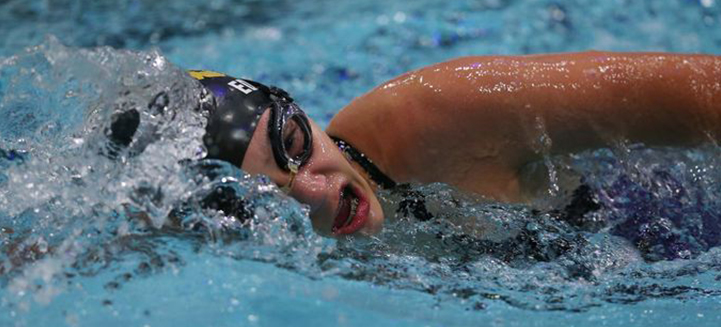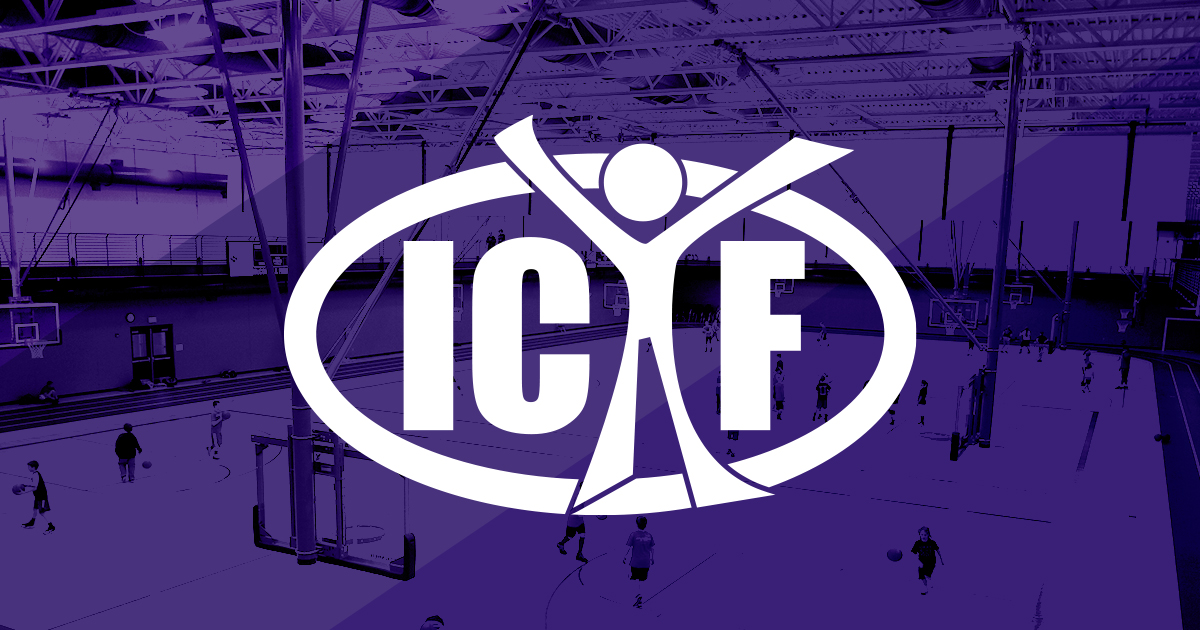SWIMMING
It is not uncommon for high school swimmers to have heavy training loads. Endurance, strength and muscle control are all important qualities of a swimmer. On top of heavy training loads, this is a time where male adolescence experience periods of heavy growth which further increase energy needs.
The adolescence period also bring about hormonal changes for females that can promote an increase in body fat. Despite heavy training, many female swimmers can struggle to maintain low body fat levels during this time of natural physiological change. (1) Adequate nutrition must be addressed to optimize nutrient needs, balance hormones and maintain proper body composition.
Long and often early morning training hours restrict a swimmer’s lifestyle. Planning ahead and always having healthful snacks within arm’s reach is key to fueling a healthy, energized swimmer.
Jennifer DeWall RDN, CSSD, LD
Jennifer works with ICYF to provide expert advice on sports nutrition and healthy eating to the student and families of Indianola. A registered dietitian/nutritionist, Jennifer owns a private practice that focuses on helping athletes stay on the cutting edge with superior nutrition.
Nutrition Recommendations for Swimmers
Eat high-energy, carbohydrate rich meals & snacks.
Strenuous daily training requires a high-energy, highcarbohydrate diet. It is not uncommon for swimmers to need close to 4000 calories a day. With these high nutrient demands, swimmers can easily under-eat. Chronic undereating poses high risk for muscle fatigue, injury, poor performance, loss of muscle mass and an overall lack of concentration.
Swimmers with high-energy requirements need to increase the number of snacks during the day and make use of energy-dense foods. It is good to have nutritious carbohydrate-rich snacks on hand to eat straight after training to start the refueling process.
| High Energy Food and Beverage Ideas |
|---|
| Swap 20 ounces of water each day for 100% fruit juice |
| Make smoothies a regular part of your eating plan.* Add nutrition boosters to your smoothies. |
| Prepare a big batch of waffles or pancakes and eat throughout the week for breakfast or as a quick snack |
| Cook quinoa and mix with peanut butter and honey for an easy snack or meal. |
| Have meal replacement bars and drinks available. |
| Make your own snack mix with cereal, dried fruit, peanuts and granola. |
Eat six times per day
To keep energy levels high and to ensure adequate calorie intake, eating six times per day is ideal. Eat a combination of carbohydrates and lean protein. A list of healthy carbohydrate and lean protein sources can be found on the ICYF “Athlete Shopping List” guide. Incorporate these foods into your daily diet.
An intake of 5-7 grams of carbohydrate per kilogram of body weight per day (326-600 grams) should cover most swimmers. A protein intake of about 1.5 grams per kilogram of body weight per day (85-130 grams) is an ideal level of protein. Keep in mind these are general scientific guidelines that vary greatly depending on one’s body weight. It is best to work with a sports nutritionist to determine your exact nutrition requirements.
STAY HYDRATED
Hydration before, during and after training should be well planned. Drinking large amounts of water in the minutes beforehand is not an optimal way to hydrate and can leave you with water sloshing in your stomach in the opening seconds of a race. Swimmers should sip small amounts of fluid during training and regularly throughout the day.
Swimmers have similar sweat rates to other athletes but are not as obvious since the swimmer is already wet. Swimmers should have water bottles and sports drinks available poolside so hydration can occur during rest periods and between sets.

HYDRATION TIPS
• Start hydrating about 4 hours before practice or competitions so that you are able to excrete any excess fluid as urine before you compete.
• If you are training for 60+ minutes, sip 4-6 ounces fluid every 15 minutes. A sports drink may be necessary.
• On days where you are training intensely, for every pound lost, replace with 24 ounces of fluid.
• Carry a water bottle with you during the day to help achieve your fluid goals. One sip of water is equal to about 1 ounce.
Hydration during practices and games is also critical. If you are playing for more than 60 minutes then a sports beverage may be needed. Sports beverages can allow you to keep your blood sugar levels within normal limits to allow for immediate energy and split-second decision making. Your brain relies on glucose for its primary fuel source. Without (glucose,) your blood sugar can drop and cause impaired mental acuity.
In order to play at your optimal level, clean eating, a healthy weight and hydration are your secret weapons to winning. For more information or a personalized plan, work with a registered dietitian/nutritionist that is board certified in sports dietetics.
References
1. Australian Government. Australian Sports Commission. www.ausport.gov.au October 2013.
2. Dunford, Marie. Sports Nutrition. A Practical Manual for Professionals. 4th Edition. American Dietetic Association, 2006.
3. Position of the American Dietetic Association, Dietitians of Canada, and the American College of Sports Medicine: Nutrition and Athletic Performance. Journal of
the American Dietetic Association, March 2009, Volume 109 Number 3 p. 509-522.
4. Vitamin D Council. “Am I deficient in Vitamin D?” Web. Oct 2013. http://www.vitamindcouncil.org.
Maintain optimal iron status
Swimmers, primarily female, can be at risk for low iron status. Low iron levels are detrimental to performance and can cause decreased aerobic capacity, diminished exercise endurance, decreased VO2max and decreased production of ATP in skeletal muscle (2). Consume iron-rich foods daily to decrease risk. Iron-rich foods include: beans, iron-fortified breakfast cereals (Cream of Wheat, Raisin Bran, Frosted Mini Wheats, Cheerios,) iron-fortified breads, iron-rich pasta (Barilla Plus,) red meat, raisins, dried apricots and pretzels. An iron
supplement in the form of ferrous sulfate may be necessary. Low iron levels can STILL affect performance without having iron-deficiency anemia.
Reduced iron levels can be assessed by a physician checking your serum ferritin level. (3) Increase your iron absorption by eating foods high in Vitamin C with your iron-rich foods. Examples include:
- Mixing iron fortified breakfast cereal with dried fruit in a baggie. Have with 100% orange juice.
- Eat pretzels with fresh strawberries for a snack.
- Use iron fortified bread to make a sandwich. Add green or red pepper slices and tomato.
Maintain optimal Vitamin D levels
Swimming is primarily done indoors. The swimming season is during winter months and training in the offseason is typically done at indoor recreational facilities. Swimmers that get little to no sun exposure may want to begin a Vitamin D supplement. Speak with your physician to get a 25 – hydroxy Vitamin D blood test. People in Iowa may be a risk for low Vitamin D levels due to our northern latitude. Being deficient in Vitamin D can cause tiredness, vague aches and pains and an increase in your susceptibility to infection. (4)
Swimmers Competition Nutrition Summary
– from the Australian Sports Commission
Muscle glycogen stores can be filled by 24 hours of a highcarbohydrate (65% total calories) diet and rest.
– Swimmers who are undertaking a long taper may need to reduce total energy intake to match their reduced workload.
– Fluid levels and carbohydrate stores need to be replenished between events and between heats and semifinals/ finals. Drink a carbohydrate-containing fluid such as sports drink when there is only a short interval between races.
– Snacks such as yogurt, fruit, cereal bars or sandwiches are suitable for longer gaps between races, or for recovery at the end of a session.
* Smoothie recipes can be found at www.biprousa.com/campaigns/ncaa-smothie/index.html.

